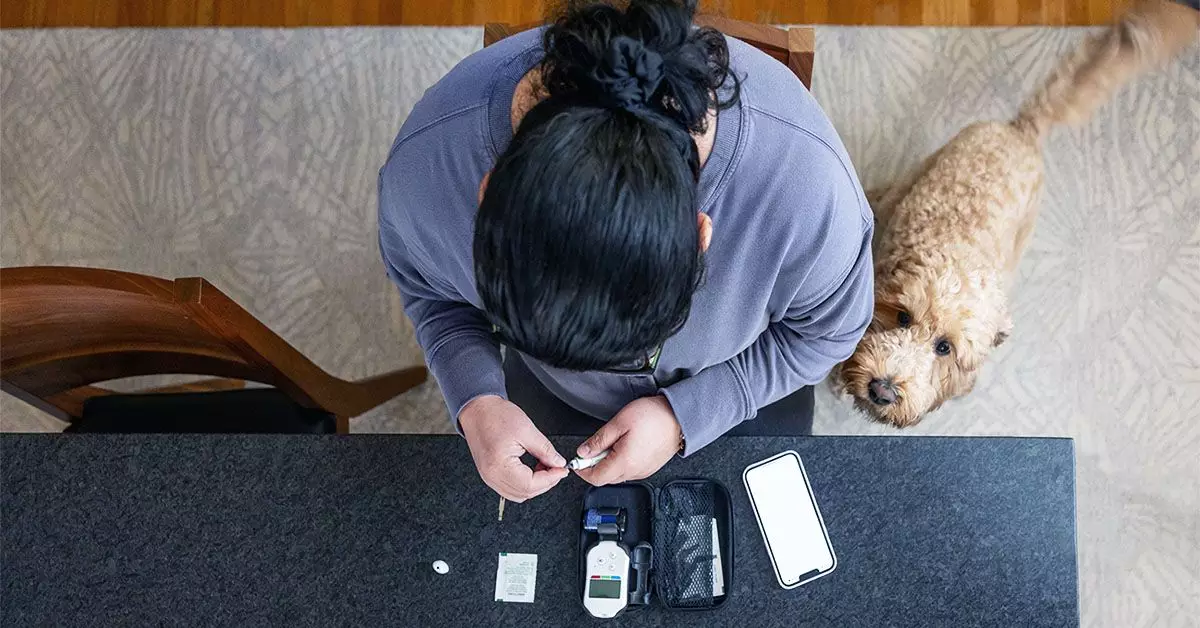Chemotherapy is a formidable treatment in the fight against cancer, but it comes with an array of side effects, including the potential fluctuation of blood sugar levels. For individuals with diabetes, or even those without, managing blood sugar during chemotherapy is vital to ensure optimal health and efficacy of treatment. Understanding how chemotherapy impacts blood sugar and what measures can be taken is crucial for maintaining well-being during this challenging time.
Chemotherapy can significantly affect glucose metabolism, often leading to elevated blood sugar levels—a condition known as hyperglycemia. This effect can occur in both diabetic and non-diabetic patients, but it is especially critical for those with preexisting diabetes. The mechanisms behind this include increased insulin resistance, where the body’s cells become less responsive to insulin, and the administration of steroids, which are frequently prescribed to alleviate the side effects of chemotherapy. Elevated blood sugar not only hampers the body’s ability to function optimally but can also diminish the effectiveness of chemotherapy, complicating treatment outcomes.
Patients with diabetes who are undergoing chemotherapy may need to adjust their insulin dosages. Those already on insulin therapy might require changes to their regimen to better manage blood glucose levels. This could mean altering the type or quantity of insulin used. For non-insulin dependent diabetics, the stress of cancer treatment often necessitates the introduction of insulin therapy due to the inevitable rises in blood sugar levels during treatment.
In tandem with adjusting medication, a consistent diet plays a critical role in blood sugar management. Ideally, patients should strive to eat at regular intervals to avoid spikes in glucose levels. However, the nausea correlated with chemotherapy may complicate meal scheduling. To counteract this, smaller, more frequent meals can be beneficial. Additionally, avoiding foods that are greasy or have strong odors can help manage nausea, allowing for better compliance with dietary recommendations.
Hydration is another integral aspect of managing blood sugar during chemotherapy. Since water contains no calories or carbohydrates, it poses no risk of elevating blood sugar levels. Maintaining adequate hydration helps in overall physiological regulation, especially on particularly warm days or during strenuous treatments. Adding a slice of fruit to water can provide flavor without significantly increasing caloric content.
Physical activity also contributes positively to blood sugar regulation. Muscle contractions during exercise facilitate the uptake of glucose by cells for energy, which is especially beneficial for insulin resistance. The Centers for Disease Control and Prevention (CDC) recommends a target of 150 minutes of moderate-intensity exercise weekly. However, due to the side effects of chemotherapy, this may need to be modified. Breaking down this goal into manageable 10 to 30-minute sessions can provide opportunities for physical activity without overwhelming fatigue.
Carbohydrate intake is another significant focus area. Different individuals have unique requirements pertaining to carb consumption, and thus it is important for patients to monitor their carbohydrate intake to help stabilize blood sugar levels. Recognizing that 15 grams of carbohydrates constitutes one serving can guide patients in planning meals efficiently. Examples such as two slices of bread or one small apple help individuals gauge their intake better. Engaging with a dietitian who specializes in oncology can provide tailored advice and coping strategies, particularly for managing changes in taste and appetite due to treatment.
Regular monitoring of blood sugar levels is vital. This can involve using a glucose monitor to check levels several times a day—before meals, post-meal, and at bedtime. Understanding patterns in blood sugar fluctuations allows for more informed decisions regarding diet and medication. Patients should communicate openly with their healthcare team about their blood sugar management, especially if they experience new symptoms, such as weakness or infection signs, which could be exacerbated by both chemotherapy and diabetes.
Managing blood sugar levels during chemotherapy requires a multifaceted approach that includes insulin management, dietary modifications, hydration, physical activity, and diligent monitoring. It is imperative for patients, especially those with diabetes, to work closely with their healthcare teams to develop a comprehensive plan that accommodates the challenges posed by cancer treatment. By addressing these factors proactively, individuals can better navigate their treatment journey while minimizing complications, ensuring that their focus remains on recovery and resilience in the face of cancer.

